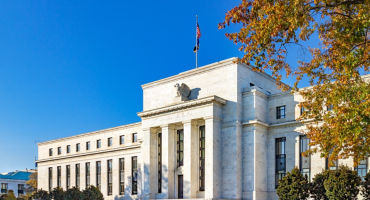- Fixed Income Portfolio Manager
Skip to main content
- Funds
- Insights
- Capabilities
- About Us
- My Account
The views expressed are those of the author at the time of writing. Other teams may hold different views and make different investment decisions. The value of your investment may become worth more or less than at the time of original investment. While any third-party data used is considered reliable, its accuracy is not guaranteed. For professional, institutional, or accredited investors only.
This is an excerpt from our 2023 Investment Outlook, in which specialists from across our investment platform share insights on the economic and market forces that we expect to influence portfolios in the year to come. This is a chapter in the Bond Market Outlook section.
First, the bad news: Global fixed income markets have undergone an extremely challenging 2022, with historically negative stock/bond correlations breaking down and leaving even diversified investors with seemingly no place to hide. Indeed, many credit market segments have posted dismal year-to-date performance, stemming from a combination of sharply higher government bond yields and wider credit spreads as the US Federal Reserve (Fed) and other global central banks have aggressively tightened monetary policies in an effort to rein in persistent inflation.
Now the good news: While this year’s economic and market turmoil has led to negative total returns in most fixed income sectors, the widespread sell-off and continued volatility have also created some attractive opportunities for discerning credit investors with longer-term time horizons.
I believe higher-yielding and income-seeking fixed income strategies – including well-run multisector credit portfolios – have the potential to act as powerful buffers against future interest-rate and credit-spread volatility. In particular, strategies designed to generate yield and total return in a risk-controlled manner by aiming to take advantage of the credit market dislocations that I anticipate going forward might be well worth considering. To further help exploit such market moves, many fixed income investors may wish to adopt a more defensive risk posture heading into 2023 and to preserve significant cash/liquidity stockpiles in their portfolios.
Despite looming (and growing) economic recession risks, I see several potential opportunities in higher-yielding credit sectors (Figure 1).
In aggregate, our predictive cycle indicators currently suggest that the global economy will likely enter a recession in 2023. However, it is not yet clear whether a mild recession would be sufficient to bring services inflation down to more manageable levels, or if we might be in for a much more severe economic downturn. In any case, I believe this year’s heightened uncertainty and volatility – which have contributed to different credit sectors selling off to varying degrees and at different times – have spawned opportunities to rotate across the global fixed income spectrum and to shift credit risk to areas that may offer compelling risk/reward trade-offs. Notably:
Bottom line: I expect there to be numerous relative-value opportunities for fixed income investors to judiciously add credit risk at potentially wider spreads in 2023.
While the deteriorating macroeconomic backdrop and challenging liquidity conditions appear to paint a dire picture for corporate bonds, I believe the bearishness is tempered somewhat by relatively attractive valuations, still-strong fundamentals, and a lack of imbalances compared to past credit cycles.
I acknowledge that monetary policy indicators, which have historically been a reliable predictor of credit market returns, look quite poor these days. Moreover, current credit spread levels, which are wide versus their historical medians across most fixed income sectors, already seem to reflect an impending slowdown in global economic activity. On a more upbeat note, corporate balance sheets appear very healthy to me overall, while many of the weaker individual credits in the market already defaulted during the early stages of the COVID pandemic.
Again, I believe many investors may be well served by building portfolio positions around various dislocations in higher-yielding credit markets, with a goal of pursuing yield and total return in as efficient and risk-aware a manner as possible. I also think it is important for investors to stay flexible and nimble with their portfolio allocations in an uncertain market landscape. Among other things, that might mean having sizable allocations to cash and liquid, developed market government bonds to be able to capitalize on market opportunities as they arise.
Expert

READ NEXT
Article 3
Stay up to date with the latest market insights and our point of view.

Weekly Market Update
What do you need to know about the markets this week? Tune in to Paul Skinner's weekly market update for the lowdown on where the markets are and what investors should keep their eye on this week.

FOMC: Easing into uncertainty
Fixed Income Portfolio Manager Jeremy Forster profiles the Fed's December rate cut, labor market trends, inflation pressures, and the role of anticipated changes to FOMC leaders in 2026.

Opportunity ahead: Optimism or illusion?
Explore our latest views on risks and opportunities across global capital markets.

Financing the AI boom: credit markets at a crossroads
Fixed Income Portfolio Manager Derek Hynes and Fixed Income Investment Specialist Will Prentis examine how the AI financing boom is transforming credit markets and discuss the opportunities and risks it creates for investors.

Low tide, sharp eyes: What to pick up
Fixed Income Managers Campe Goodman and Rob Burn share their outlook for credit in 2026 and discuss how investors can reposition for an environment where opportunities are harder to find.

Finding durable value amid shifting currents
Fixed Income Strategist Amar Reganti and Investment Director Marco Giordano explore how to approach bond investing in 2026. They see durable value for investors who can flexibly adjust to the shifting currents ahead.

Rapid Fire Questions with Ross Dilkes
In this edition of “Rapid Fire Questions,” fixed income portfolio manager Ross Dilkes shares his views on the Asia credit market—covering the macro outlook, China’s momentum, the most compelling opportunities across the region, and key risks shaping the next 12 months.

Investing in 2026: prepare for inflationary growth
Macro Strategists John Butler and Eoin O'Callaghan share their annual macro outlook and discuss likely implications for markets and investors. They outline four potential scenarios graded by level of probability.

Constructive, selective, resilient
Amar Reganti, a member of our Insurance team, explains why he believes insurers should remain selectively risk-on while prioritizing high-quality income and preserving flexibility to add risk as valuations improve.

Questioning US credit quality
Fixed income strategist Amar Reganti examines questions surrounding US creditworthiness.
URL References
Related Insights
Monthly Market Review — October 2025
A monthly update on equity, fixed income, currency, and commodity markets.
By